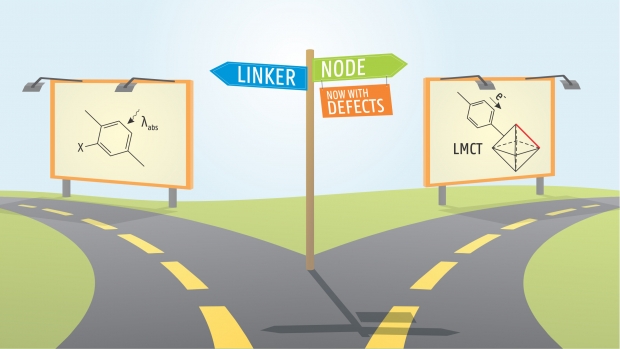
Abstract
UiO-66 is a promising metal-organic framework for photocatalytic applications. However, the ligand-to-metal charge transfer of an excited electron is inefficient in the pristine material. Herein we assess the influence of missing linker defects on the electronic structure of UiO-66 and discuss their ability to improve ligand-to-metal charge transfer. Using a new defect classification system, which is transparent and easily extendable, we identify the most promising photocatalysts by considering both relative stability and electronic structure. We find the properties of UiO-66 defect structures largely to depend on the coordination of the constituent nodes, and the nodes with the strongest local distortions to alter the electronic structure most. Defects hence provide an alternative pathway to tune UiO-66 for photocatalytic purposes, besides linker modification and node metal substitution. In addition, the decomposition of MOF properties into node- and linker-based behavior is more generally valid, so we propose orthogonal electronic structure tuning as a paradigm in MOF electronic structure engineering.
 Open Access version available at UGent repository
Open Access version available at UGent repository